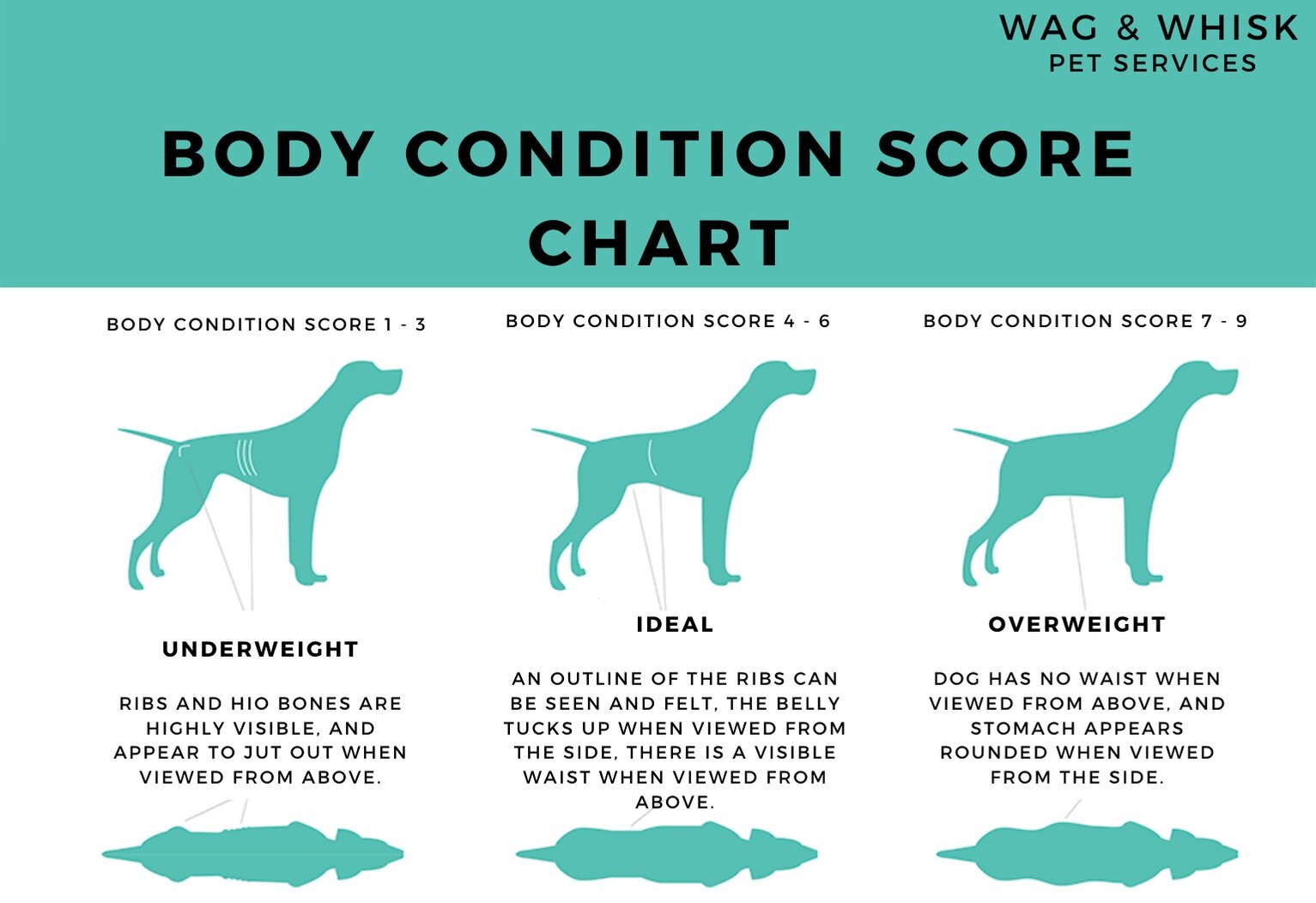FIND OUT YOUR DOG'S BODY CONDITION SCORE
Over 50% of dogs in the UK are overweight. Being overweight can lead to many problems such as reduced life expectancy, chronic inflammation, cancer, metabolic and endocrine disorders, orthopaedic and joint diseases, many skin diseases, and respiratory disorders.
WHAT IS BODY CONDITION SCORE
Worldwide veterinary organizations have come up with a scoring system that goes on your dog's shape rather than the weight. This system is called Body Condition Scoring (BCS). It is a visual, hands-on assessment of your dog’s lean muscle and fat levels and is an important measurement of their health.
A Body Condition Score is based on four criteria.
How easy it is to feel the ribs
How obvious the waist and abdominal tuck is
How much excess fat is beneath the skin
How much muscle mass is present.
For a dog to score in the healthy range, the ribs should be easy to feel but not see. A defined waist or “abdominal tuck” should be obvious to see when you look at the dog from the top and the side.
An overweight dog would have a saggy stomach, no obvious waist, ribs that are difficult to feel under the fat, and a back that is flat and broad.
An underweight dog would have visible bones – ribs, spine, hips, and there are less fat and muscle than there should be. The waist would also be very pronounced.
Using a 9 point scale, an ideal score is 4 or 5, with 1-3 being too thin and 6 – 9 being too fat.
How to Measure Body Condition Score at home
Your dog should be standing whilst you do the assessment. Preferably get someone to hold them at the head end.
To begin, press the flat of your hands gently over the rib cage. Individual ribs should be felt without having to press hard. There should be no overlying fat, and the ribs should not be seen.
Feel around your dog’s waist and look from the top and the side. There should be an “hourglass” shape from above and an obvious upward curve of the tummy, rather than straight along or downward.
Feel the spine which runs right down the middle of the back. Feel the tops of the hips and tops of the shoulders. In an underweight dog, these will stick out and are easily felt. In an Ideal Dog, they will be able to be felt, but with a layer of fat/muscle over them.
